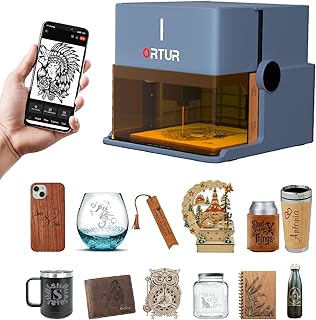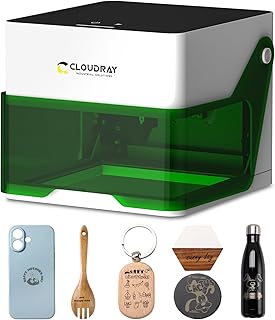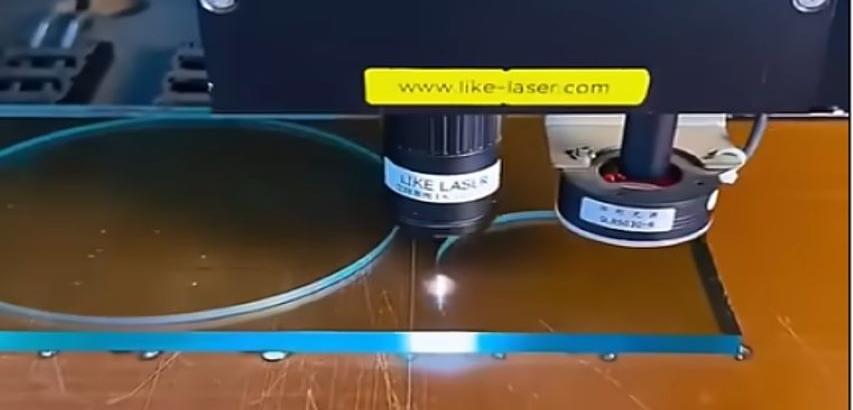A Glass Laser Cutting Machine is a high-precision, non-contact industrial tool that uses a focused laser beam to score, cut, engrave, or drill glass with exceptional accuracy and clean edges. It has revolutionized glass fabrication by enabling complex designs that are difficult or impossible to achieve with traditional mechanical scoring and breaking methods.
Core Principle: Thermal Stress Cracking
The most common and efficient method for cutting glass with a laser is controlled thermal stress cracking, also known as the "thermal stress" or "fracture-guided" technique. This process does not melt or vaporize the glass but instead uses heat to create a controlled fracture.
Heating: A focused CO2 laser beam (typically with a wavelength of 10.6 µm, which is highly absorbed by glass) is directed onto the surface of the glass. The beam rapidly heats a small, localized spot (a few millimeters in front of the intended cut path).
Cooling: Immediately after heating, a cooling jet (often compressed air or a water-air mist) is applied to the same spot or the heated zone is allowed to cool rapidly by moving the laser away.
Stress Induction: The rapid temperature change creates a significant thermal gradient—the heated area wants to expand, while the cooled area contracts. This induces a high level of tensile stress.
Controlled Fracture: When the tensile stress exceeds the fracture strength of the glass, a micro-crack forms. The laser beam is then moved along the desired cutting path, and this cycle of heating and cooling propagates the crack precisely along the path, effectively "guiding" the fracture through the material. The entire process is computer-controlled for absolute precision.
Key Components of the Machine
Laser Source:
CO2 Laser: The workhorse for glass cutting. Its infrared wavelength is perfectly suited for being absorbed by glass, making the thermal stress process highly efficient.
Fiber Laser (for certain applications): Used more for engraving, marking, or drilling on glass, as its shorter wavelength can be reflected by untreated glass. However, with specific parameters, some ultrafast (picosecond/femtosecond) fiber lasers can perform "cold" ablation for extremely precise cutting without thermal stress.
Motion System:
Gantry System (Moving Laser): The laser head is mounted on a high-precision X-Y gantry that moves over a stationary glass sheet. Ideal for large format sheets.
Galvo Scanner (Moving Mirrors): Uses fast-moving mirrors to steer the laser beam at very high speeds. Best for high-speed engraving, marking, and intricate, smaller cuts.
Chiller Unit: Essential for cooling the laser source to maintain its power stability and extend its lifespan.
Control Software & CNC Controller: The brain of the operation. CAD/CAM software is used to design the cutting path, which is then translated into commands (G-code) for the CNC controller to direct the laser's movement, power, and speed.
Assist Gas System: Delivers a stream of compressed air or water mist to the cutting point to cool the glass and remove any debris, ensuring a clean cut.
Advantages and Benefits
Exceptional Edge Quality: Produces edges that are smooth, chipping-free, and often "fire-polished" in appearance, frequently eliminating the need for secondary edge finishing.
High Precision and Complexity: Can achieve intricate contours, sharp corners, small holes, and highly complex geometries with tolerances as tight as ±0.1 mm.
Non-Contact Process: The laser does not physically touch the glass, eliminating mechanical stress, tool wear, and contamination. This makes it ideal for cutting ultra-thin, brittle, or pre-processed (e.g., tempered) glass.
Speed and Efficiency: For complex patterns, it is significantly faster than traditional methods. The automated process allows for continuous, unattended operation.
Minimal Material Waste: The narrow laser kerf (the width of material removed) and nested cutting paths optimize material usage.
Versatility: Can process various types of glass, including soda-lime, borosilicate, aluminosilicate, and even fused silica, in a range of thicknesses (typically from 0.5mm to 20mm).
Limitations and Considerations
Initial Investment: The machines have a high capital cost compared to traditional glass cutting equipment.
Operating Costs: Consumables like laser gases (for CO2 lasers), electricity, and maintenance contribute to the ongoing operational expense.
Thermal Process Limitations: The thermal stress method works best on glasses with a high coefficient of thermal expansion (like soda-lime). It is less effective on materials with low thermal expansion, such as fused quartz.
Thickness Constraints: While effective for many applications, there is a practical limit to the thickness that can be cleanly cut, as the thermal stress must be controlled through the entire depth.
Expertise Required: Operating and maintaining the machine requires specialized training in both laser technology and the software.
Applications
Electronics Industry: Cutting cover glass for smartphones, tablets, touchscreens, and smartwatches.
Automotive Industry: Shaping interior and exterior glass components with high precision.
Architecture and Interior Design: Creating decorative glass panels, partitions, shelves, and signage with intricate patterns.
Art and Sculpture: Enabling artists to realize complex glass designs.
Laboratory and Medical Equipment: Fabricating precision components for microscopes, sight glasses, and medical devices.
The Glass Laser Cutting Machine is a pinnacle of modern manufacturing technology, transforming a fragile and challenging material like glass into a medium for high-precision, complex design. By harnessing the principle of controlled thermal stress, it overcomes the limitations of traditional methods, offering unparalleled edge quality, design freedom, and production efficiency. While the investment is substantial, the capabilities it provides make it an indispensable tool for any industry where precision-cut glass is a critical component.
 |  |  |
